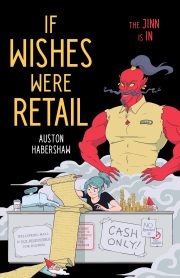Game Writing with Text Adventure Games
by Misha Grifka Wander
When I teach video game analysis to college students, I sometimes tell them that they’re going to make their own games—and their eyes glaze over in panic, thinking of the intense production requirements of a video game: music, voice acting, animation, design, and so on. If you’ve ever been curious about writing interactive stories, you might have been similarly discouraged. However, there are a lot of tools now to simplify the process of making interactive fiction! In this article, I’ll go over two options for starting to write text-based interactive fiction, eliminating the need to do anything other than what you already do: write a compelling story.
What Is Interactive Fiction?
Interactive fiction, adventure games, and hypertext stories are all versions of the same thing: text-based stories where the primary method of play is choosing what to click on, and reading the outcomes. They allow you to use your existing talent for description, dialogue, and prose in general to create an immersive and engaging experience for players.
Creating other kinds of games often requires a large budget and expertise in such esoteric skills as 3D rendering and stats-block writing. But interactive fiction requires very little financial investment or technical expertise. It offers the chance to write nonlinear stories, stories with multiple potential outcomes, and more. Experiments that are difficult to carry out in a word processor document can be easily accomplished with interactive fiction. While most other types of games require extensive coding skills, interactive fiction requires very little—it often uses simple formats that act like code but allow the user to minimize the amount of special characters and complex lingo they have to memorize.
There are many types of interactive fiction. Some are all text; some have images or even fully animated characters and backgrounds. This article focuses on text-forward methods. Some of these stories are action-packed and demand the player make difficult choices or suffer even more difficult consequences. Some are more gentle and encourage exploration and meditative descriptions of places or people. The medium can encompass any genre. The only requirement is that the reader/player has some sort of agency over how the story unfolds, even if only over the order in which portions are read.
Intrigued? Here are two ways to start creating your own text adventures.
Twine
Twine is a treasured tool in parts of the indie game design community. It allows anyone, without coding experience, to write an interactive text-based story and save it in HTML format, making it easy to publish online. By default, the exported version looks clean and minimalist, creating an unobtrusive backdrop for your words. The primary mechanic is to create pathways from one page of text to another, traveling via clicking on highlighted words. For example, when I open a Twine game, I might see a simple paragraph introducing a woman and her dog. The word “dog” might be a different color, and when I click on it, I’m taken to a different page with text about the dog—which has further highlighted words that I can click on to go elsewhere, and so on. These pathways can diverge, converge, loop back, and create a story in any configuration.
You can use Twine in your browser or download the software for free for offline use. There’s a robust support community and extensive documentation. It has four different story formats that come with preset defaults and tools for making certain kinds of stories.
The thing that makes Twine particularly useful as a tool is how much it scales. It’s very easy to start creating right away—there are very few things you have to remember in order to use the software. However, once you’re comfortable with the basic format, you can add more mechanics, such as an inventory system or events that only happen if you’ve already done something to trigger them. This flexibility means that Twine can make everything from minimalist short stories to traditional text adventures to full-fledged RPGs. It’s not suited for 3D immersive gameplay, but it’s surprisingly robust for being a free, easy-to-learn tool.
ChoiceScript
Choice of Games is a popular company that makes interactive fiction and games—a game hosted by them was even on the most recent Nebula ballot. The company makes and sells its own games but also makes ChoiceScript, its in-house game-writing system, available for free. Similar to Twine, it’s a coding-lite platform, but you do have to work with a little more typical code formatting. However, it’s well-documented and not too complicated. It’s also a system more suited to making dramatic choices (hence the title) than Twine, which requires a little bit more work on the backend to make those same choices have any mechanical impact.
ChoiceScript has two primary advantages over Twine. One, it comes with more preexisting systems—most Choice of Games works have stats and inventory systems, and ChoiceScript comes with easy ways to add these to your code. Two, the company provides a hosting platform for any games made with its system. You can add your finished product to their marketplace, and you get a portion of the revenue generated by sales. While the platform takes part of the revenue as well, they also provide an easy place to host, as well as a certain number of customers from people browsing the site.
There are many other tools, but these two are excellent free introductions to the medium. Play around with them, try writing something interactive, and you too may come to love the diversity of stories to be found in interactive fiction.
 Misha Grifka Wander has a PhD in English from Ohio State University, and currently resides in Ohio. He is an editor, academic, and game designer, as well as a cheesemonger by day. More information can be found at mishagrifkawander.com.
Misha Grifka Wander has a PhD in English from Ohio State University, and currently resides in Ohio. He is an editor, academic, and game designer, as well as a cheesemonger by day. More information can be found at mishagrifkawander.com.


